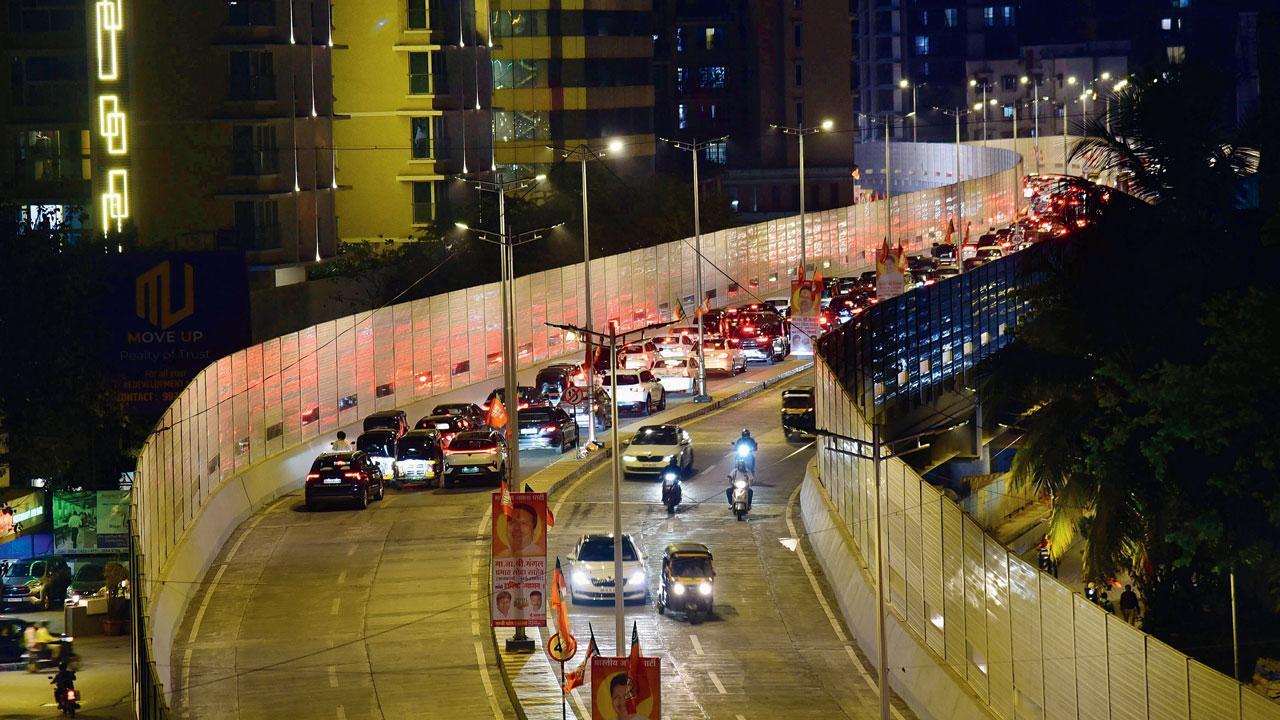We need to ask ourselves if some projects are better left abandoned, given the life lessons they can teach us

The Gopal Krishna Gokhale bridge, a crucial east-west connector, in Andheri on February 27. Pic/Nimesh Dave
 I’m not sure why the Brihanmumbai Municipal Corporation (BMC) is trying to fix that bridge. I should be more specific, given the well-known problems related to many bridges across the city, so what I am referring to here is the Gopal Krishna Gokhale bridge.
I’m not sure why the Brihanmumbai Municipal Corporation (BMC) is trying to fix that bridge. I should be more specific, given the well-known problems related to many bridges across the city, so what I am referring to here is the Gopal Krishna Gokhale bridge.
Everyone in Bombay and beyond now knows that there is a height difference of around six feet between that edifice and the Barfiwala connector in Andheri West. There have been memes about the gap, and lots of snide comments, along with the rigorous pointing of fingers. The BMC has also been laughed at, but that is something they have long grown used to, which makes me believe that naming and shaming is a waste of time.
Everyone also knows that there should have been more attention paid to that little detail of where the bridges are supposed to meet before crores were poured into the project, but maybe that’s just nitpicking. So, here’s the argument I’d like to make: why bother trying to connect the bridge?
ADVERTISEMENT
According to reports in this paper, experts from two institutions that specialise in technology (but not so much with placements) have been advising the civic body on how to resolve the issue. By the time this column goes to print, work will probably have begun. The cost—a mere R8 crore—is not what makes me propose that the BMC let both bridges stay the way they are. I think it is a solid opportunity for us to make a bold statement about what Bombay really is, and what we all stand for as its people. It sends a clear message to everyone who visits us: ‘We want to try, but we will never try hard enough.’
If you have been paying attention, it’s the kind of message we have often hinted at, time and again, at all entry points to the city. Take the airport, for example. Decades after the embarrassment of our old one, we were given a shiny new building that made us beam with pride. That happiness lasted only until new management took over. Now, not only do we have to explain why our international and domestic terminals confuse foreigners, we are compelled to apologise for why the airport looks world-class but doesn’t function like one. We point to the amazing peacock motifs and attention to detail, then struggle to explain why walking from the point of disembarkation to its poorly staffed immigration counters is like attempting a mini marathon.
Consider our highways. They cost a lot, apparently, but it’s never obvious where the money has gone because of how quickly potholes start to appear. It’s the thought that counts though. We need highways because we are a big city, but we’re not going to make them last too long because that would spoil our residents and make them take smoother commutes for granted. It’s also why we plan bigger and flashier projects, coastal roads that make life better for a small percentage of vehicle owners, and undersea tunnels that aren’t always accessible. They exist so we can tick little boxes and speak of development, while spending smaller and smaller amounts on public healthcare, hygiene and education.
If you’re vigilant, some artistic markers of this trait also exist at various spots. Look at those selfie points, for instance, or the mysterious art projects that appear as if magic in places where we least expect them. Look at the strange figures and objects—urns, carts, butterflies—and try telling a visitor what they signify, who put them up, or why they exist in the first place. It’s all part of the message: ‘We’re going to try and emulate what the world’s great cities do, but we’re going to do it without too much effort or thought, because that’s who we are.’
So, to get back to my original argument, I believe the two bridges should stay the way they are. The BMC should find some minister to inaugurate them before turning them into an installation project for everyone to admire. Let us all applaud the time, energy, resources, and taxes that have gone into their construction, then ask ourselves why they fail to meet. That existential question will tell us everything we need to know about why corruption, inefficiency, and a lack of common sense are not liabilities when it comes to how our governmental agencies function. They are part of who we are, and what makes this city what it is: one that is forever striving, but never quite arriving.
When he isn’t ranting about all things Mumbai, Lindsay Pereira can be almost sweet. He tweets @lindsaypereira
Send your feedback to mailbag@mid-day.com
The views expressed in this column are the individual’s and don’t represent those of the paper.
 Subscribe today by clicking the link and stay updated with the latest news!" Click here!
Subscribe today by clicking the link and stay updated with the latest news!" Click here!








